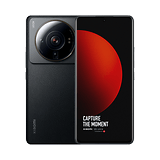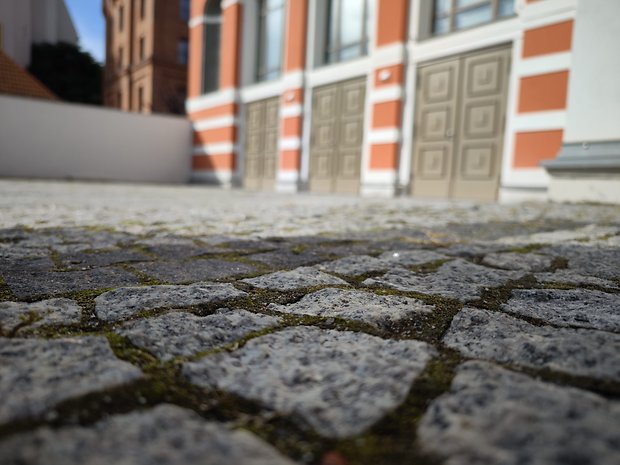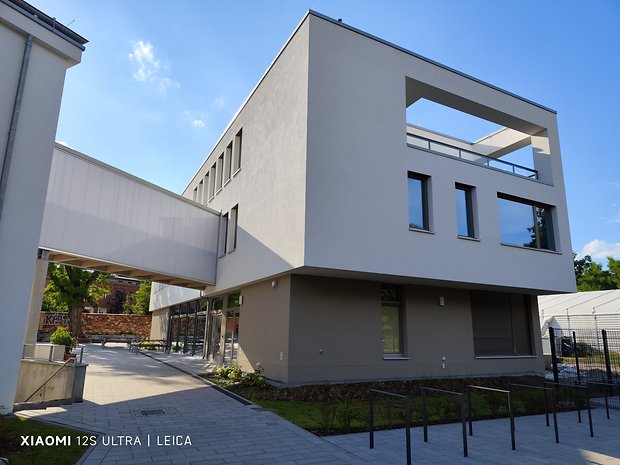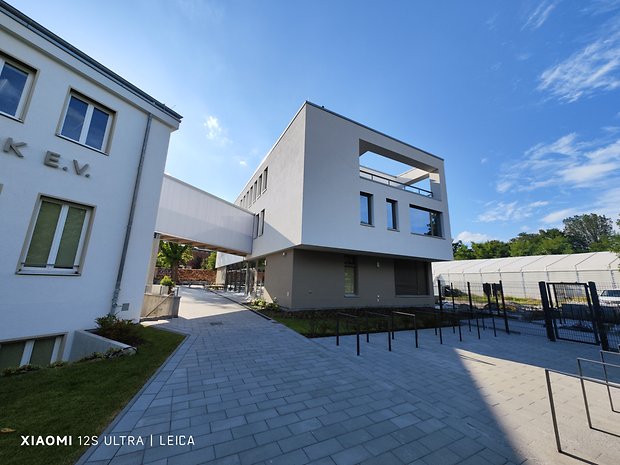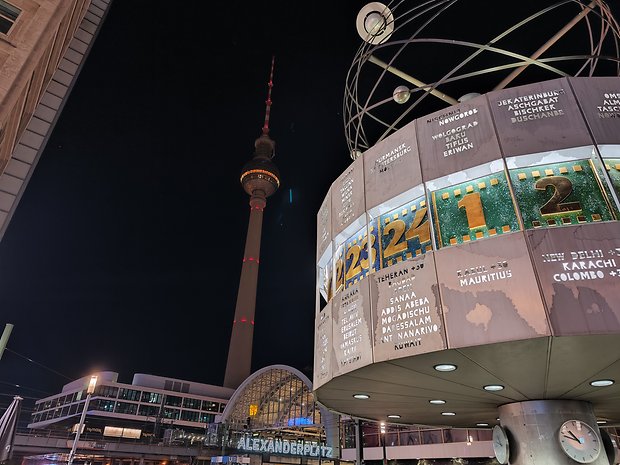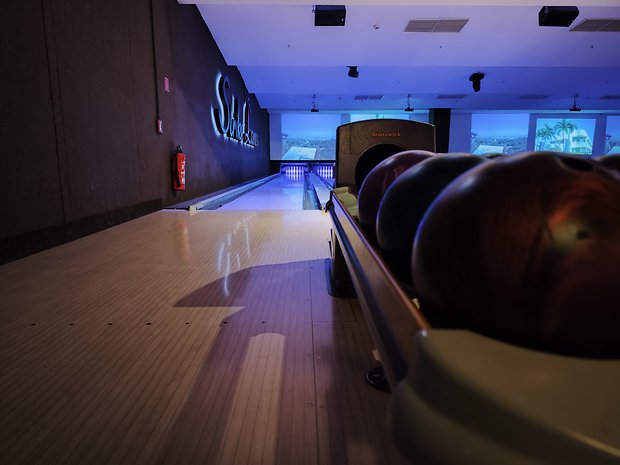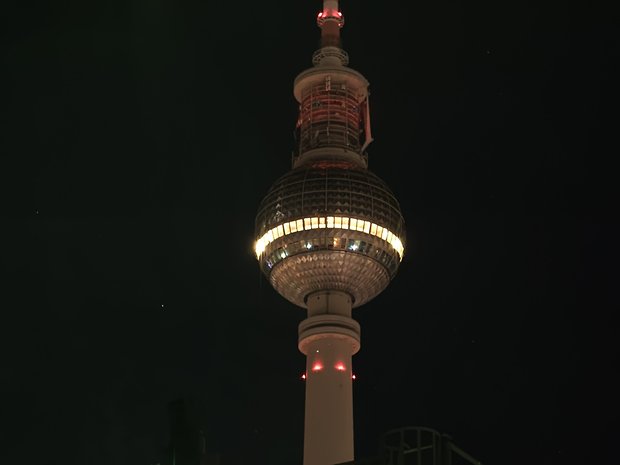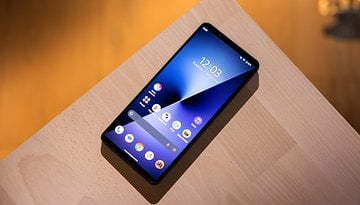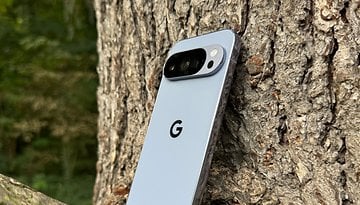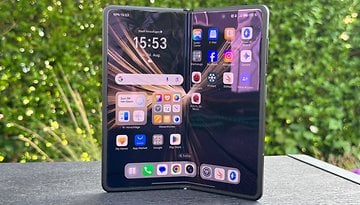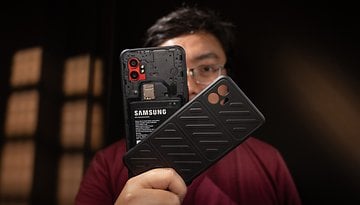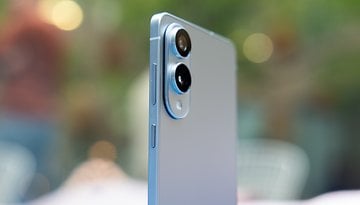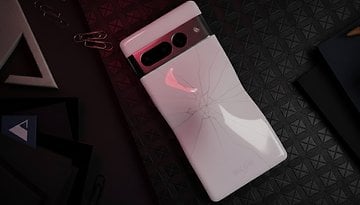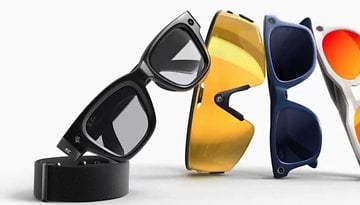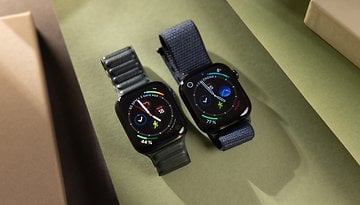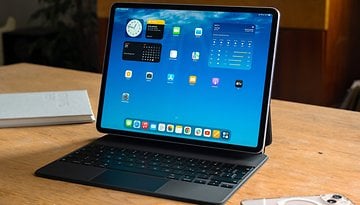Xiaomi 12S Ultra review: Leica to the fore
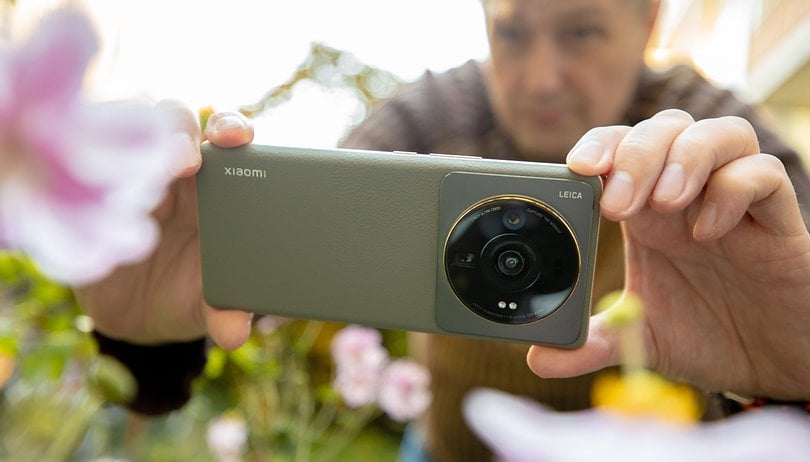

The Xiaomi 12S Ultra is the first smartphone in which the relatively new collaboration with camera expert Leica manifests itself, even though the tiny logo is easy enough to miss on the huge camera array at the back. Xiaomi equips the camera flagship the 1-inch Sony IMX989 image sensor for this special occasion for the very first time in its own history. We take a closer look at the 12S Ultra in the NextPit review.
Good
- Very good LTPO AMOLED display (WQHD/120 Hz)
- Main camera works great under all situations
- Long battery life
- IP67 certification
- Good haptics despite heavy weight
- "Harman Kardon" sound quality
Bad
- CPU throttling
- 20, 28, and 32 bands not supported
- No EU ROM
- No secondary display
- 67-watt power supply
- Expensive
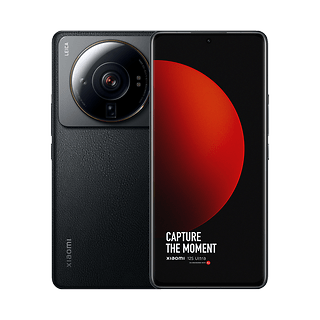
Xiaomi 12S Ultra release date and price
The Xiaomi 12S Ultra was officially launched in China in July 2022. However, unlike its predecessor, the model never arrived in the US as with other Xiaomi smartphones. Perhaps things might change with the Xiaomi 13 Ultra slated for a spring release in 2023.
However, you can still import a unit from established companies like TradingShenzhen, having gained its reputation as a reliable import retailer over the past few years. The online store sells the smartphone in Verdant Green and Classic Black with imitation leather in three different storage configurations:
- Xiaomi 12S Ultra with 8/256 GB for currently $975
- Xiaomi 12S Ultra with 12/256 GB for currently $1,015
- Xiaomi 12S Ultra with 12/512 GB for currently $1,095
The Xiaomi 12S Ultra is already a real attention grabber with its 1-inch Sony sensor and the rather obvious triple camera array: The flagship delivers excellent photos under almost all conditions. Even though the other components such as the WQHD display, the Snapdragon 8+ Gen 1 SoC, an almost 5,000 mAh battery, and plenty of storage space are quite convincing, we will not immediately recommend it wholeheartedly.
Due to the "China only" policy, the LTE bands, which are urgently needed in countries outside of China, and of course, the corresponding system language continue to be a bane. The secondary display, which was still present in the predecessor, has also fallen victim by not appearing this time around. The bottom line is either to recommend its predecessor, the Xiaomi Mi 11 Ultra or to wait for the Xiaomi 13 Ultra.
Xiaomi 12S Ultra design and build quality
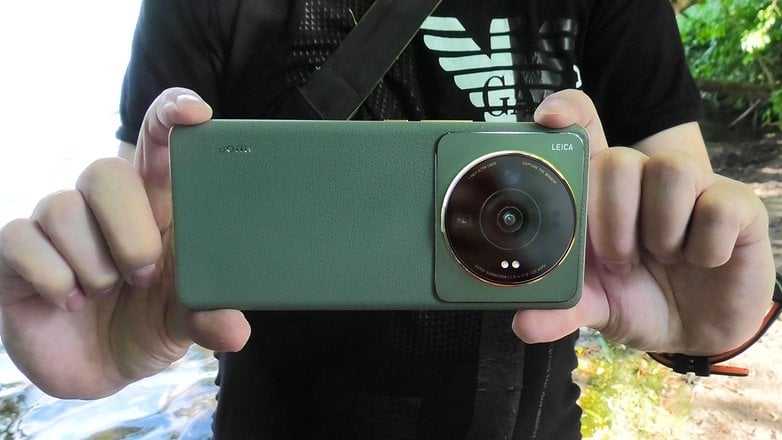
The Xiaomi 12S Ultra does not leave you guessing when it concerns the design: Xiaomi wanted to feature an old, compact camera at the back - and they succeeded. The dominant circular camera unit takes up a third of the entire back and is also difficult to hide. Presumably, this is supposed to pay homage to its cooperation with Leica, whose logo is now discreetly immortalized at the back.
What I liked:
- Design are pleasant to the eyes.
- Imitation leather is nice to the touch.
- Solid build quality.
- IP68 certification.
What I disliked:
- Golden frame is tacky (this is a matter of personal preference)
- "Harman Kardon" sound could use more bass
- One speaker is always covered when held in landscape mode
- No secondary display
- 225 grams of weight is unpleasantly heavy in the pocket
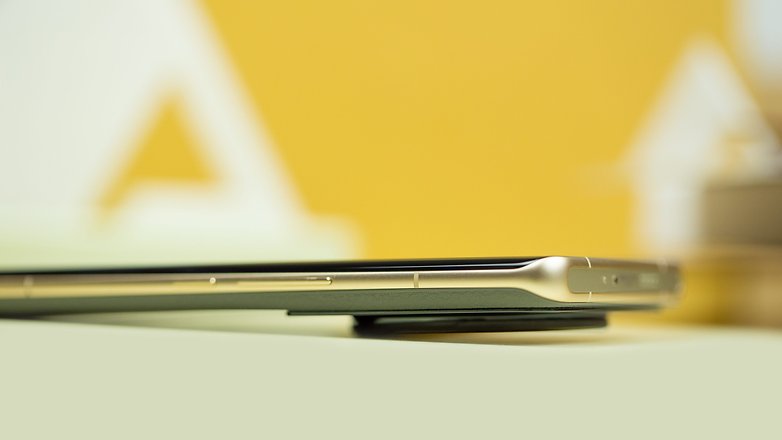
Anyone who gets to hold the Xiaomi 12S Ultra in their hand for the first time will probably be unable to avoid a big grin. This very first collaboration with Leica tips the scales at a whopping 225 grams with a size of 163.2 x 75 x 9.3 millimeters. That is probably also a record, just like the massive and circular camera array at the back. It protrudes another 4 millimeters from the back in addition to its one mm "base plate".
At least it doesn't tilt on the desk when lying prone on the back, taking up the entire width and about a third of the height of the back. The nice posterior is also rather charming in its own right.
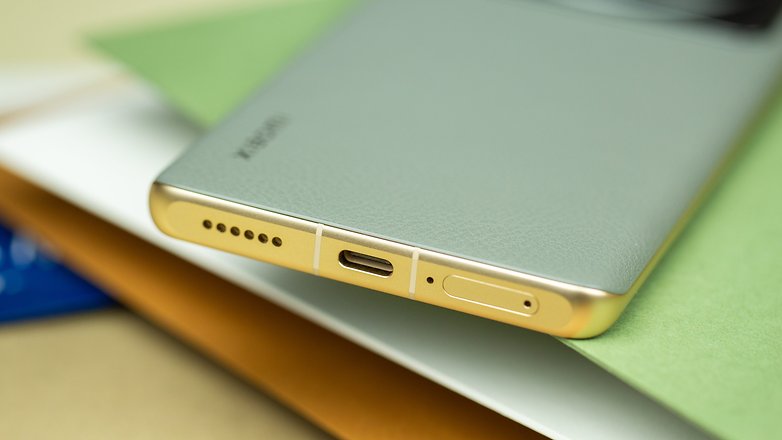
Nevertheless, the heavyweight chassis feels extremely secure in the hand probably because of the imitation leather that comes in either green or black shades. It features very high-quality good workmanship, an aluminum frame, and good button placement on the right side that characterizes the Ultra flagship.
In front, as is so often in the case of flagships, there are rounded edges all around the display. Not everyone likes it, but I can reassure you this: I did not notice any input errors during my daily use. I only had my finger too far in the display once when taking pictures, so the shutter did not work. However, this can be adjusted in the settings.
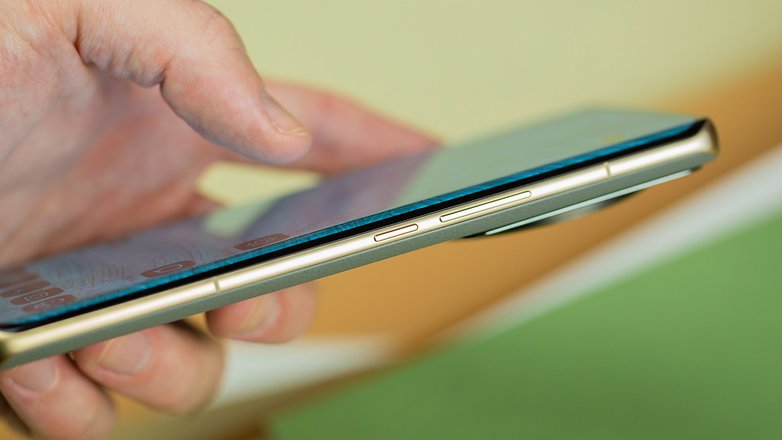
The stereo speakers from Harman Kardon at the top and bottom live up to their name, but could still have pumped out a bit more bass for my taste, if that is at all feasible for a smartphone. However, one of the two speakers remains covered in landscape mode when gaming, which I also consider as unfavorable.
The upper and lower sides are flat, so the Xiaomi 12S Ultra could theoretically stand on them if you do not have a tripod at hand in windless environments.
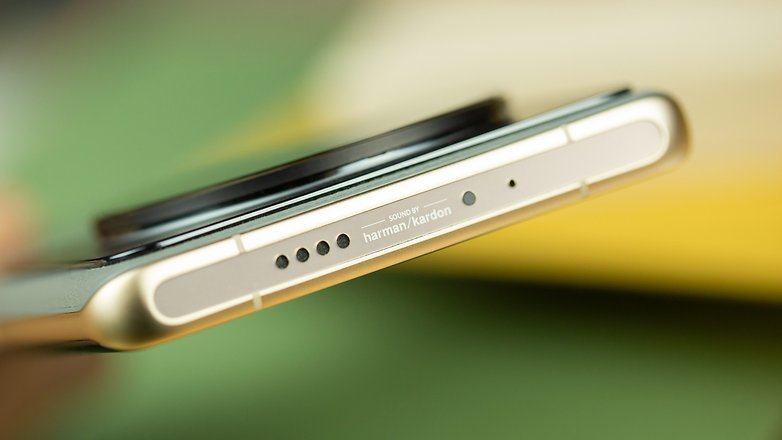
Xiaomi 12S Ultra display
The Xiaomi 12S Ultra is equipped with a 6.73-inch curved AMOLED display. The maximum resolution stands at an incredible 3,200 x 1,440 pixels (WQHD+) with a refresh rate of 120 frames per second. Over here, we have the second-generation LTPO technology in play. Users have the choice to select between 60, 90, and 120 Hertz refresh rates or you can let the artificial intelligence decide for you and get an optimized frequency of 1 to 120 Hertz refresh rate, depending on the situation.
What I liked:
- Curved display.
- Crisp colors and rich blacks.
- AOD with a large theme selection.
- Finally, it is readable under sunlight.
What I disliked:
- -
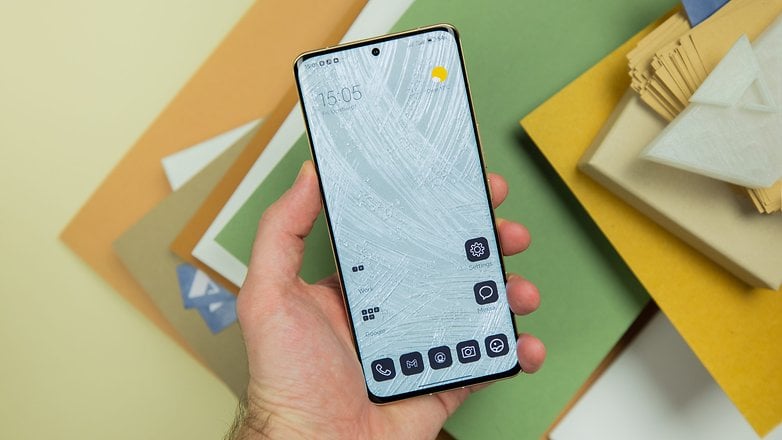
What else is there to say about Samsung's very high-quality display? Of course, the panel offers a high viewing angle stability, the contrast is rich, and the colors are also pleasing. Apart from that, Xiaomi also offers numerous settings. I was pleased by the extremely legible screen even under direct sunlight conditions.
The official specifications claim a maximum brightness of 1,000 nits in manual mode (HBM) and 1,500 nits (peak) is possible in the automatic setting under direct sunlight. Our measurements resulted in 614 nits (HBM) and 954 nits for peak brightness, but under simulated sunlight.
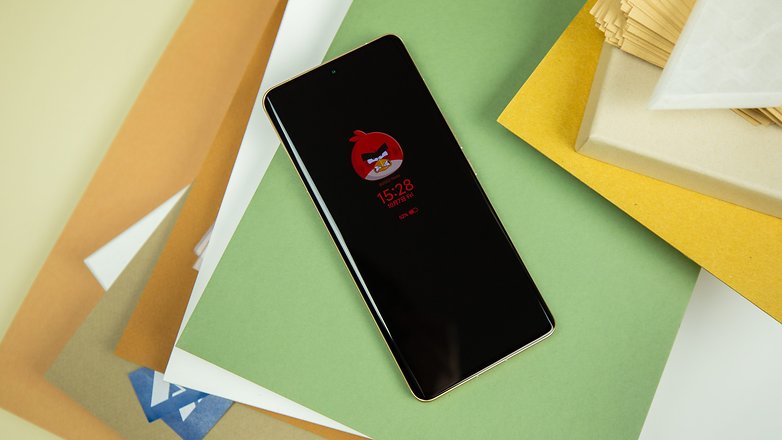
Of course, the Xiaomi 12S Ultra also features the Always-On Display (AOD) that is available in MIUI 13 with its manifold themes and settings. Thus, the user can individually set different options to activate the AOD. The so-called "Detect gaze" function is new, which is basically nothing else than that the screen remaining activated as long as you look at it.
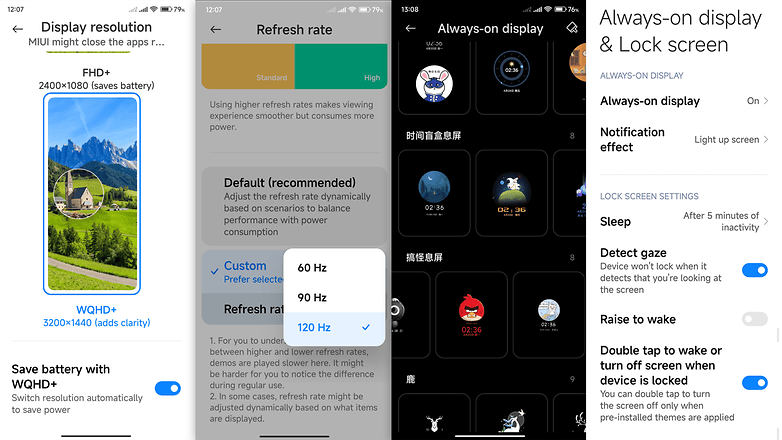
Xiaomi 12S Ultra software
The Xiaomi 12S Ultra arrived for the NextPit editorial team to pick apart with Android 12 preinstalled and the custom skin user in version 13.0.5. The Google security patch is dated July 1, 2022. Since the Xiaomi 12S Ultra cannot be purchased directly in the US but only via an import retailer, statements regarding the "guaranteed" updates remain unclear.
If we want to stick to the official Xiaomi security bulletins, we will receive three "major updates" and four years of security updates. Of course, that is effectively just 2 Android updates since Android 13 is already available this year.
What I liked:
- Three major Android updates.
- Four years of security updates.
- MIUI and its many features.
What I disliked:
- Too much bloatware
- Only available in Chinese and English language options.
Even though Google is actually banned in China, the Android operating system is still available in China via Google Mobile Services (GMS). You will search in vain for the Google Play Store and applications that we are all familiar with, such as Gmail, Google Calendar, or the Chrome browser.
In our case, TradingShenzhen was kind enough to install the Play Store and some other useful applications before delivery. However, the online retailer left quite a number of Chinese apps on the smartphone. Give yourself a few days to clean up and banish all Chinese notifications from the notification bar.
The test for the SafetyNet status has been passed, so paying with Google Pay should not be a problem, either. The Widevine DRM technology stands at level 1, so there are no restrictions in terms of resolution for Amazon Prime Video and Netflix here. I would also like to explicitly point out that the system language is available in only English and Chinese. The solution for other language options would be to flash an EU ROM, which I do not recommend to the average user.
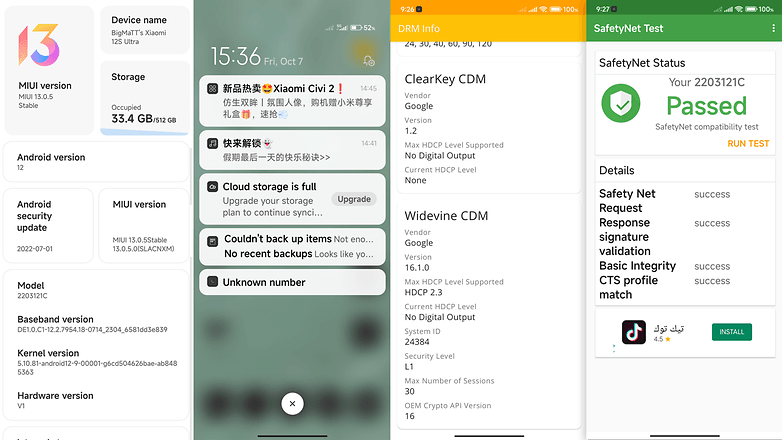
Xiaomi 12S Ultra performance
The eight cores of the Snapdragon 8+ Gen 1 power the Xiaomi 12S Ultra , which is considered the current spearhead of what the Californian chip manufacturer Qualcomm has to offer. At least, until the Snapdragon 8 Gen 2 is officially presented. China has always been well-positioned in terms of storage space, this the Xiaomi 12S Ultra offers either 8 or 12 GB of LPDDR5 working memory.
In terms of internal program memory, the interested customer can choose between 256 and 512 GB of UFS-3.1 internal storage space. With so much available memory, no one will ask for an option for slow microSD card storage, which is probably what Xiaomi is hoping for.
What I liked:
- Very high-performance capability.
- Barely noticeable heat development.
What I disliked:
- Thermal throttling kics in very early on.
- No option for memory expansion purposes.
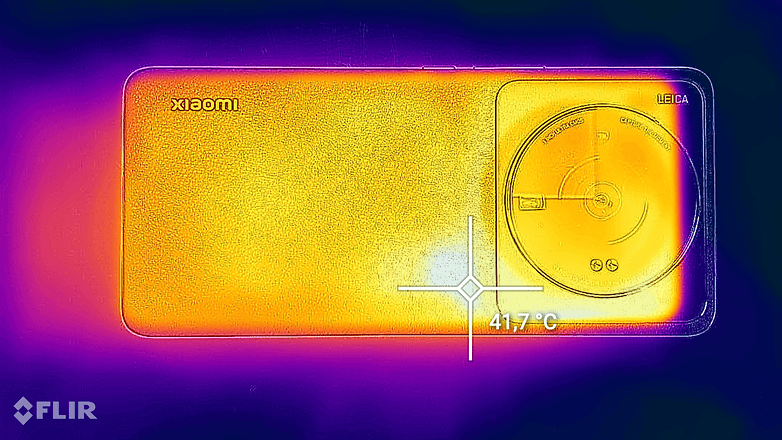
In our standard benchmark, 3D Mark's WildLife, the software was no match for the sheer power of the Snapdragon 8+ Gen 1 SoC. With the simple remark "Maxed Out!" our test ended without any values being shown. However, the CPU stress test showed that the SoC (System on a Chip) was already heavily throttled after just less than three minutes.
This might also be the reason that the back did not get uncomfortably warm in any way at any time. The thick rectangular metal plate underneath the camera array nor the imitation leather also did not indicate any heat.
In daily use that will, of course, include playing performance-hungry games like Real Racing 3 or Call of Duty: Mobile, there were no problems with the performance at all. It goes through all menus swiftly, and having numerous apps opened simultaneously would not be a concern for the Xiaomi 12S Ultra's owner.
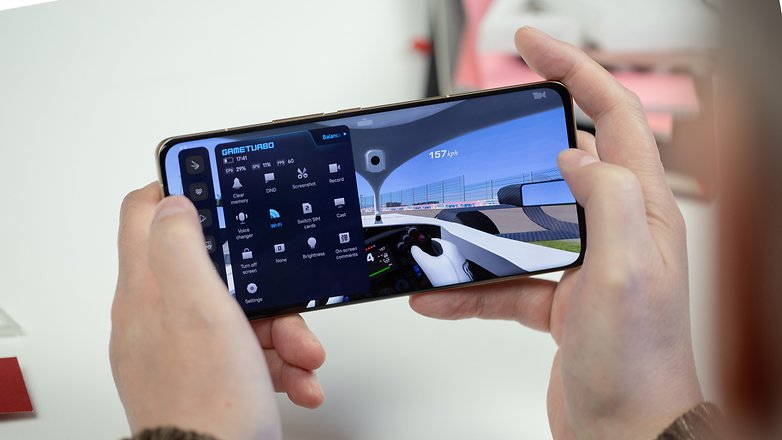
| Xiaomi 12S Ultra | Motorola Edge 30 Ultra | Samsung Galaxy S22 Ultra | Samsung Galaxy Z Fold 3 | Huawei Mate XS 2 | |
|---|---|---|---|---|---|
| 3D Mark Wild Life | Maxed Out! | 8108 | 5682 | 5683 | 5793 |
| 3D Mark Wild Life Stress Test | Best Loop: 8.896 Worst Loop: 3.958 |
Best Loop: 10.250 Worst Loop: 6.101 |
Best Loop: 5741 Worst Loop: 3351 |
Best Loop: 5579 Worst Loop: 3435 |
Best Loop: 5782 Worst Loop: 3267 |
| Geekbench 5 | Single: 1322 Multiple: 4303 |
Simple: 1325 Multiple: 4310 |
Single: 1155 Several: 3356 |
Single: 1095 Several: 3239 |
Single: 840 Multiple: 2759 |
Xiaomi 12S Ultra camera
Visually-speaking, we are now in the most important section of our in-depth review of the Xiaomi 12S Ultra. I do not mean only the visually dominant camera array, but also the first Xiaomi smartphone that resulted from its cooperation with Leica.
I can say this much right away: Apart from the small lettering on the array, I do not sense much contribution from the Wetzlar camera experts. At least Carl Zeiss still has the special T* lenses. But don't worry, the photo results still proved convincing.
What I liked
- The 1-inch IMX989 is not exactly one.
- Photos look great under all conditions.
What I disliked:
- Too little Leica performance apart from the logo.
- No secondary display for selfies.
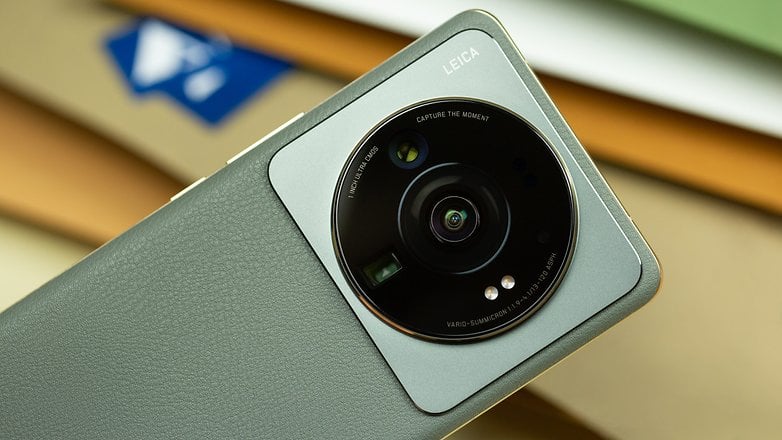
I don't want to beat around the bush: The Xiaomi 12S Ultra is equipped with a 1-inch Sony IMX989 image sensor that features a 50 MP resolution in the best case (or not). By default, it does so via 4:1 pixel binning, which shrinks the image to 12.5 megapixels but increases the "virtual" pixel size from 1.6 to 3.2 micrometers.
The fact that the image sensor is not really 1-inch in size has already been sufficiently reported by us and I certainly don't need to explain that once again. Furthermore, there are two Sony IMX585 image sensors for a 48 MP ultra-wide angle and a 48 MP telephoto camera. These two candidates were already installed in the predecessor, thus the 1-inch sensor has to take the helm this time around.
It was almost not to be expected otherwise: The Xiaomi 12S Ultra delivers, for example, amazing daytime shots. Even the depth effect (portrait shots) is smart enough to separate our three ladies from the background well thanks to the Time-of-Flight sensor. There are also no unpleasant surprises in wide-angle shots as far as the identical colors are concerned.
Magnification can range from 2x to 5x without any loss and with optical image stabilization. The result also looks acceptable depending on the subject as well. After that, the telezoom camera still offers a 10x to 120x magnification. I like to call this "spy zoom" because the result isn't good for much more.
- Also interesting: Did you find the 200 MP smartphone?
You have already seen what the 50 MP camera is capable of without pixel binning in the blind test. I have added two of the photos to the picture gallery below. Even if hardly anyone is interested, there are also macro shots that were also pleasing to the eye. Night shots are and remain the supreme discipline for smartphone cameras.
These work across all three cameras in the Xiaomi 12S Ultra. While the large Sony sensor does work rather well in this department, detailed accuracy is lost in wide-angle or zoom shots.
We already mentioned it at the beginning: The Xiaomi 12S Ultra is the first smartphone proof of the cooperation between Xiaomi and Leica. What does the user get out of it? There is a so-called "Leica Vibrant" and a "Leica Authentic" mode, which will be present in a prominent bar in the photo. The mode's name says it all—as with Zeiss, you get a photo without much color correction.
You can do that on your own as well, but I expected a bit more from a cooperative effort with Leica. Perhaps we will have to wait for the Xiaomi 13 Ultra, which is also supposed to see a wider worldwide release according to CEO Lei Jung.
Last but not least, two sentences about the 32 MP front-facing camera. If you find the right distance, the selfies are pleasing even at night. However, we have to compare it with its predecessor, the Xiaomi Mi 11 Ultra, once again. It had a secondary display at the back which also allowed using the "major" cameras for self-portraits. Of course, the OmniVision sensor does what it is supposed to here again.
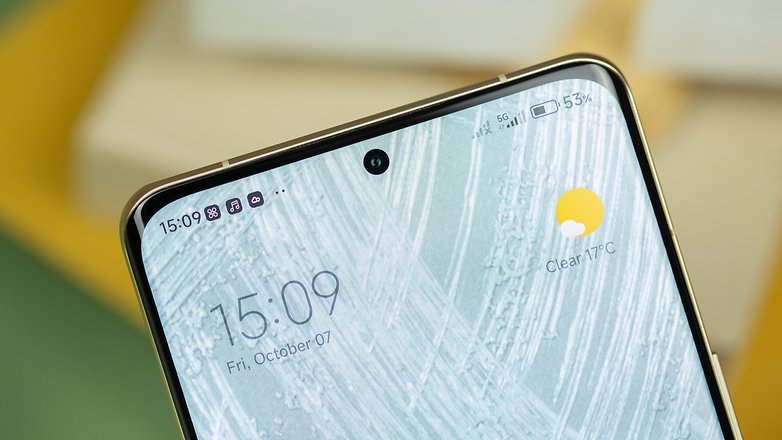
Xiaomi 12S Ultra battery
The Xiaomi 12S Ultra has a 4,860 mAh battery installed. That is not a record-breaking capacity, but the flagship smartphone is heavy enough in the first place. You can manage well with the almost 5,000 mAh for daily use, provided you leave the typical display settings to the artificial intelligence to handle.
In my case, this means that I can use it for one and a half days with a lot of Slack traffic. If you are a bit more frugal in terms of social media exchanges, it might be very possible to achieve two days of use.
What I liked:
- 4,860 mAh battery.
- All-day battery life.
- Wireless charging at 50 watts.
What I disliked:
- No 120-watt power supply.
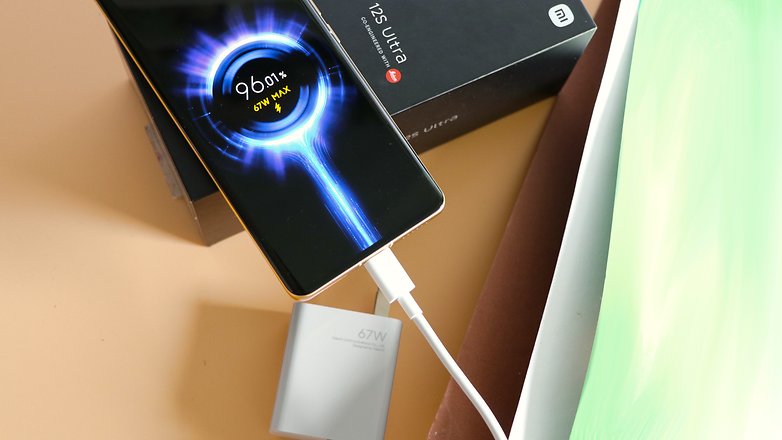
On the other hand, the included 67-watt power adapter is a real disappointment for me. Admittedly, this is a luxury compared to Samsung. But even the recently unveiled Xiaomi 12T (review) came with a 120-Watt HyperCharge power supply.
Thus, a complete charging cycle also takes just under 58 minutes. After 5 minutes, the battery is charged by 15 percent and after 20 minutes, you hit 47 percent of battery life. The half hour mark will yield a 65 percent charge with the 67-watt HyperCharge.
In the PCMark Work 3.0 battery stress test, the 12S Ultra ran for 9 hours and 57 minutes with a brightness of 200 nits, full WQHD resolution, and a fixed 120 Hertz refresh rate. It then achieved 12 hours and 7 minutes of runtime with an automatic refresh rate and FHD resolution.
Overall, this is almost one hour less than Motorola's Edge 30 Ultra, which has a 4,610 mAh battery installed. That does not result in any point deductions but neither does it result in any plus points.
The Xiaomi 12S Ultra can also be charged wirelessly at 50 watts, although that figure stood at 80 watts in its predecessor. Reverse wireless charging is also possible at 10 watts, and it can be rather difficult to comprehend such regression in hardware specifications.
Xiaomi 12S Ultra technical specifications
| Technical specifications | |
|---|---|
| Device | |
| Image |  |
| Screen | 6.73-inch AMOLED, 3,200 x 1,440 pixels (WQHD) resolution, 120 Hertz refresh rate (LTPO) |
| Dimensions | 163.17 x 74.92 x 9.06 mm (H x W x D) |
| Weight | 225 g (incl. battery) |
| SoC | Qualcomm Snapdragon 8+ Gen1 |
| Memory (varies depending on region) |
8/12 GB LPDDR5 RAM 256/512GB UFS 3.1 ROM |
| Software | Android 12 | MIUI 13.0.5.0 |
| Expandable memory | None |
| Main camera | 50 MP | f1.9 aperture | Sony IMX989 | 1 inch | 23 mm focal length | 4:1 pixel binning for 3.2 µm pixel size | OIS | Dual Pixel PDAF |
| Ultra Wide Angle Camera | 48 MP | f/2.2 aperture | Sony IMX586 | 13 mm focal length | 1/2.0 inch | 128° viewing angle | PDAF |
| Telephoto camera | 48 MP | f/4.1 aperture | Sony IMX586 | 120 mm focal length | 1/2.0 inch | 5x optical telezoom | OIS |
| Selfie | 32 MP | f/2.4 | OV32c | |
| Video | 4K at 60/30 fps | 1080p at 60/30 fps |
| Audio | Harman Kardon stereo speakers | Dolby Atmos |
| Battery | 4,860 mAh |
| Charging via cable | Max. 67 W |
| Wireless charging (Qi) | Max. 50 W wireless charging | 10 W reverse charging |
| IP certification | IP68 |
Final verdict
Those who lay their eyes on the Xiaomi 12S Ultra for the first time or even hold it in their hands will probably have two first impressions: First, the smartphone is particularly heavy at 225 grams and second, it has a bulky Leica camera at the back. Nevertheless, the Xiaomi 12S Ultra feels particularly good in the hand due to the "vegan leather" material.
The circular camera array that takes up one-third of the back, on the other hand, not only looks massive, but also delivers convincing photo results under all circumstances. The Android smartphone is also top-tier in the hardware department, although a 120-watt power supply would have suited the 4,860 mAh battery much better than the included 67-watt unit.
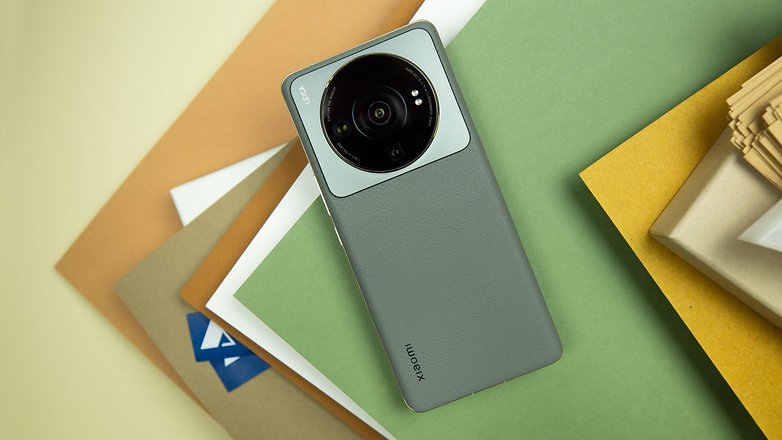
Underneath the hood lies the fastest Qualcomm processor currently with a Snapdragon 8+ Gen 1 and memory to spare. The 6.73-inch AMOLED display with a 3200 x 1440 pixels resolution and installed LTPO technology is also impressive. Nevertheless, the camera monster cannot completely convince us here at NextPit.
That is not only due to the lack of LTE bands and system languages, but rather because it has hardly improved on its predecessor, while omitting the useful secondary screen. In that case, we recommend buying the Xiaomi Mi 11 Ultra and having to live without much less. Or you can wait for the Xiaomi 13 Ultra, which was officially promised to us by Lei Jun, but not before the NextPit editors review it.
